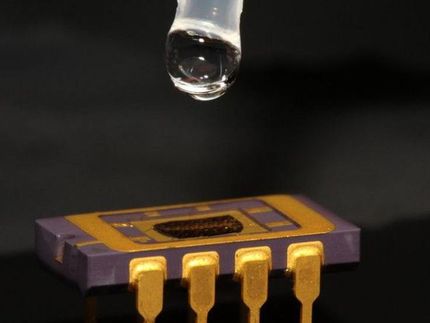New surface makes oil contamination remove itself
Researchers of Aalto University have developed surfaces where oil transports itself to desired directions.
Advertisement
Researchers' oleophobic surfaces are microtextured with radial arrays of undercut stripes. When oil drops fall on these surfaces, drops move away from the landing point to the direction set by asymmetric geometrical patterning of the surface. The surfaces open new avenues for power-free liquid transportation and oil contamination self-removal applications in analytical and fluidic devices.

Oil drop moves away from the landing point to the direction set by asymmetric geometrical patterning of the surface
Ville Jokinen / Aalto University
We developed surfaces that are able to move liquid oil droplets by surface tension forces. Droplets from anywhere within the pattern will spontaneously move to the center of the pattern, tells Postdoctoral Researcher Ville Jokinen.
Although surface engineering facilitates effective liquid manipulation and enables water droplet self-transportation on synthetic surfaces, self-transportation of oil droplets posed a major challenge because of their low surfacetension, explains Postdoctoral Researcher Xuelin Tian.
New surfaces are also able to move low surface tension liquids other than oil. They work for water, wine and even pure ethanol. Directional liquid transportation of water is also found in nature, for instance, in cactus needles and the shells of desert beetles. Researchers see a range of industrial applications.
The droplets position themselves very accurately at the center of the pattern. This could be used to deposit arrays of functional materials. We envision the patterns being used the other way around as well, for instance, to transport unwanted stray droplets away from critical areas of devices, such as to prevent clogging of nozzles in inkjet printing, says Professor Robin Ras.
Most read news
Other news from the department science

Get the food & beverage industry in your inbox
By submitting this form you agree that LUMITOS AG will send you the newsletter(s) selected above by email. Your data will not be passed on to third parties. Your data will be stored and processed in accordance with our data protection regulations. LUMITOS may contact you by email for the purpose of advertising or market and opinion surveys. You can revoke your consent at any time without giving reasons to LUMITOS AG, Ernst-Augustin-Str. 2, 12489 Berlin, Germany or by e-mail at revoke@lumitos.com with effect for the future. In addition, each email contains a link to unsubscribe from the corresponding newsletter.

































































